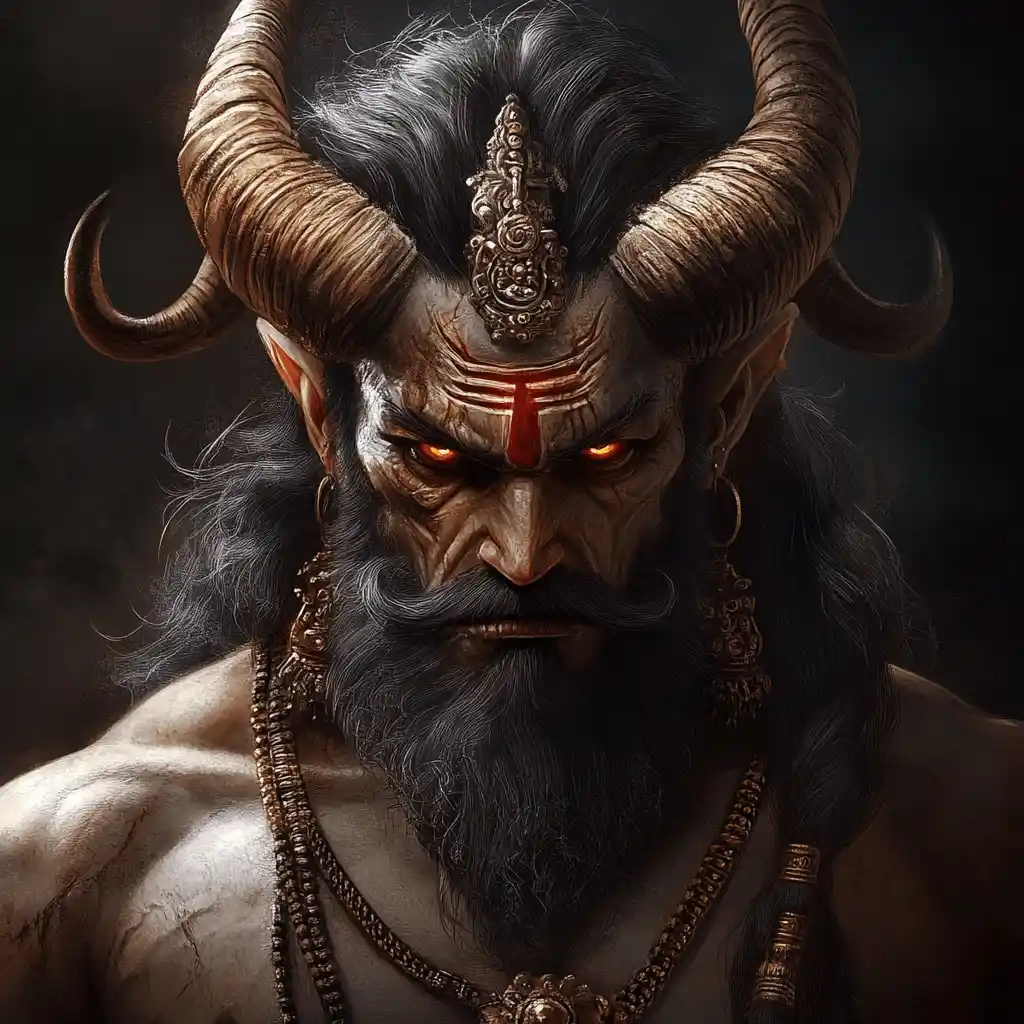BRAHMARAKSHASA
In Hindu mythology, a Brahmarakshasa (also spelled as Brahma Rakshasa or Brahma Rakshas) is a supernatural creature or spirit with origins in ancient Indian folklore. The term “Brahmarakshasa” is a combination of two words: “Brahma,” referring to the Hindu god of creation, and “Rakshasa,” which generally denotes a malevolent being or demon.
A Brahmarakshasa is believed to be the soul of a Brahmin (a member of the priestly caste in Hinduism) who, due to certain deeds or actions in their lifetime, is cursed to roam the earth in a monstrous form after death. Brahmarakshasas are often depicted as vengeful and malevolent entities, driven by anger, resentment, or unfulfilled desires from their past lives.

PHYSICAL CHARACTERISTICS
Monstrous Form: Brahmarakshasas are typically depicted as grotesque and fearsome beings, often possessing a humanoid appearance but with exaggerated and monstrous features.
Distorted Facial Features: They may have distorted or exaggerated facial features, including sharp teeth, elongated or misshapen noses, and sinister expressions. Their eyes are often described as glowing or possessing a malevolent gaze.
Large and Hulking Build: Brahmarakshasas are often portrayed as physically imposing creatures, with a large and hulking stature that adds to their intimidating presence.
Clawed Hands and Feet: They are sometimes depicted with clawed hands and feet, resembling those of predatory animals, which they use to grasp or rend their prey.
Dark and Matted Hair: Brahmarakshasas are often described as having long, dark, and matted hair that hangs unkempt around their monstrous visage, adding to their wild and terrifying appearance.
Ragged Clothing or Animal Skins: In some depictions, Brahmarakshasas are shown wearing ragged or tattered clothing, or even draped in animal skins, reflecting their wild and feral nature.
Aura of Darkness: Brahmarakshasas are often associated with darkness and malevolence, and they may exude an aura of dark energy or emanate an unsettling presence that instills fear in those around them.
ORIGINS
Brahmarakshasas are often depicted as cursed souls or spirits of deceased Brahmins (members of the priestly caste) who, due to certain transgressions or unresolved issues in their lifetimes, are condemned to roam the earth in a monstrous form. They are typically associated with forests, graveyards, and other desolate places, where they are believed to prey upon unsuspecting victims.
While Brahmarakshasas are primarily known for their malevolent nature, some stories and myths also explore themes of redemption and the potential for these beings to find peace or liberation from their cursed existence through acts of penance or divine intervention.

POWERS AND ABILITIES
Shape-Shifting: Brahmarakshasas are often depicted as shape-shifters, capable of assuming different forms at will. This ability allows them to disguise themselves and deceive their victims, making them formidable adversaries.
Supernatural Strength: Brahmarakshasas are said to possess immense physical strength, surpassing that of ordinary humans.
Cunning and Deception: Brahmarakshasas are known for their cunning and deceptive nature. They may use illusions, trickery, and manipulation to lure unsuspecting victims into their clutches or to outwit their adversaries.
Fear Inducement: Brahmarakshasas are often associated with instilling fear and terror in those who encounter them.
Regeneration: Some Brahmarakshasas are believed to possess the ability to regenerate or heal from injuries at a rapid rate.
Dark Magic: Brahmarakshasas may be proficient in dark magic and occult practices, allowing them to wield powerful spells and curses against their enemies. They may use magic to manipulate the elements, control minds, or unleash destructive forces.
Immortality or Longevity: Brahmarakshasas are often depicted as immortal or possessing extended lifespans, enduring for centuries or even millennia.
Curse-Bearing: Brahmarakshasas are sometimes associated with carrying curses or hexes, which they can unleash upon individuals or communities as a form of retribution or punishment.





